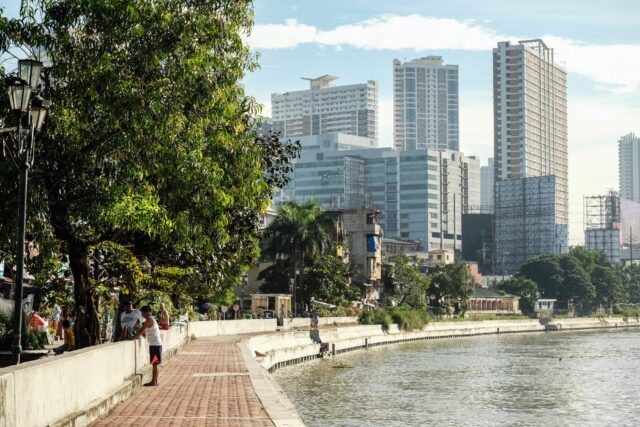BANDA, India (Thomson Reuters Foundation) – At home in one of India’s poorest districts, 35-year-old Vandana has been trying to come up with new ways to cook potatoes – the only food she has been able to buy for months as pulses and vegetables become an occasional treat.
Vandana’s husband, who works as a construction laborer in Delhi, used to be able to send her 3,000-4,000 rupees ($36-$48) each month, but that has been much harder over the last five years, she said.
“When food prices are high and there’s no work, sometimes we have to cut down on the number of meals and take on debt,” she told the Thomson Reuters Foundation in her village in Banda in northern India, which voted on May 20 in the country’s ongoing election.
The 200 residents of Vandana’s village, like millions of others, are struggling with an economic slowdown in rural India, which stands in stark contrast to the country’s spectacular economic growth and the prosperity of its urban population.
Rural areas are home to 60% of India’s 1.4 billion people, making tough economic conditions in the countryside a key issue as voters choose the nation’s next government. Results are due by June 4, with exit polls showing the ruling Bharatiya Janata Party (BJP) on track to win a rare third term.
Once the mammoth voting exercise is finished, the new government will need to tackle unemployment, stagnant wages and losses linked to climate change in the countryside, said Benoy Peter, executive director of Centre for Migration and Inclusive Development (CMID), an India-based non-profit.
“Rural parts of the country are going through an economic distress that all successive governments have miserably failed to address,” Peter said.
Despite world-beating economic growth, India has not been able to create enough work for rural dwellers – many of whom, like Vandana’s husband, migrate to urban areas in search of jobs.
Recent economic studies have shown that after adjusting for price hikes, real earnings and wages for people working in agriculture, construction, manufacturing and services – which employ most of India’s rural poor – have stagnated in the past five years.
At the same time, debt levels have increased. The average amount of debt among rural households increased from about 32,500 rupees in 2012 to 59,700 in 2018, according to the State Bank of India (SBI).
Adding to the distress, inflation in rural areas was higher than in the cities between 2019 and 2024, official data shows, mainly due to the impact of rising prices for food – which accounts for half of rural households’ total spending.
WORK DRIES UP, WAGES FALL
In Banda, which lies in Uttar Pradesh state, the Thomson Reuters Foundation interviewed members of nearly 30 low-income families, many of whom said a lack of regular work, and inflation, was eroding their stagnant or shrinking incomes.
Wages sent home by migrant workers in the cities are one of the main sources of family income in rural India. But since the COVID-19 pandemic, workers say they have been struggling.
Laborer Ram Kishor, who is in his mid-40s, said he used to be able to find 15 days of construction work per month, but is now lucky to get 10.
Another migrant construction laborer, 25-year-old Kalka Prasad, said wages were being driven down due to a tough labor market, especially among the young.
“The going wage is 400 rupees (per day). But contractors start offering 200, when they see more people. So, either you accept a lower wage or go back home without work,” Prasad said.
In their campaign manifestos, the BJP party of Prime Minister Narendra Modi and the main opposition parties have pledged various measures aimed at easing rural economic hardship – from distributing free food rations to hundreds of millions of families to raising the minimum wage.
But neither side in the election has spelled out how they would tackle climate change losses if elected, Peter said.
“Both parties are silent on how they plan to tackle the loss of livelihoods in rural India due to climate change,” he said.
Villagers in Banda and elsewhere in the wider Bundelkhand region have become increasingly dependent on money sent home from migrant laborers in the cities due to frequent droughts and erratic rainfall linked to climate change.
“Migration has become a common survival strategy for many in Bundelkhand, driven by the collapse of their agricultural livelihoods,” said Ritu Bharadwaj, a researcher with International Institute for Environment and Development (IIED), a London-based think-tank.
CLIMATE CHANGE PAIN
In Bhaggu Purva village, Urmila Devi grows wheat and rice on two acres (0.81 hectares), but her earnings are being squeezed by multiple problems.
Disease and pest damage to crops have become frequent, likely due to climate change, pushing her to spend more on pesticides to deal with these attacks, adding to already high growing costs.
“On average my farm income is about 10,000 (rupees) annually. But even that is not assured,” Devi said.
That is only enough for the family to cover their food needs for three or four months, forcing Devi’s husband to migrate for daily wage work to substitute their income.
Agriculture’s gross value added (GVA), a metric of the sector’s economic health, fell to 14.5% in the current financial year from 16.3% in 2021, official data shows.
In Banda, the housewife Vandana is among many villagers who have no land of their own to fall back on – meaning she and her husband must earn money in order to buy food. She sometimes picks up jobs as a farm laborer.
For now though, her biggest worry is the future of her 17-year-old son, who will soon enter the job market.
Watching other youngsters toiling on construction sites and getting exploited by contractors, she hopes brighter prospects await him.
“We have cut on our essentials to get him an education, so that he gets a good job in the city and has a better life than us,” she said. – Reuters












